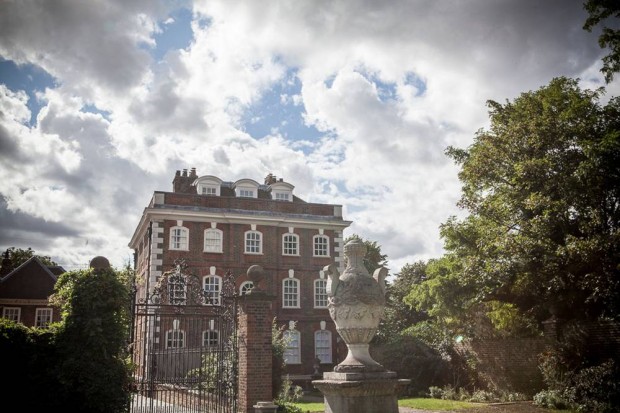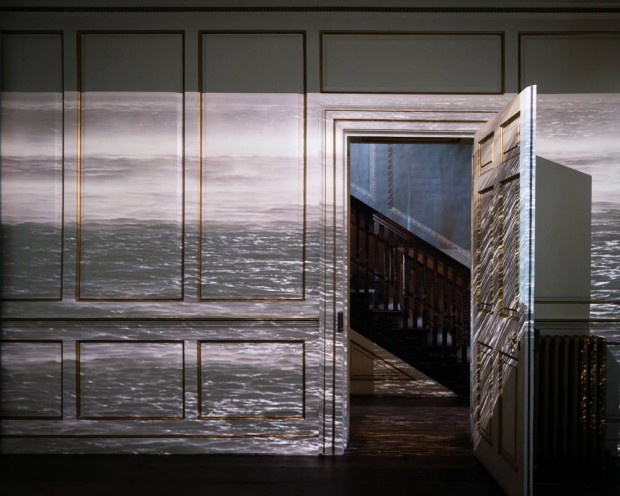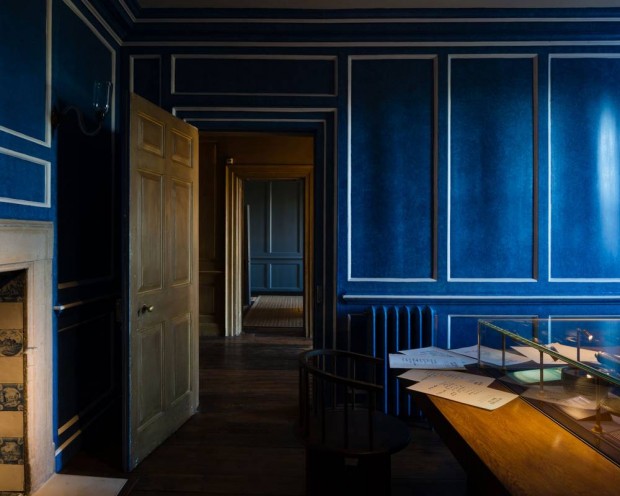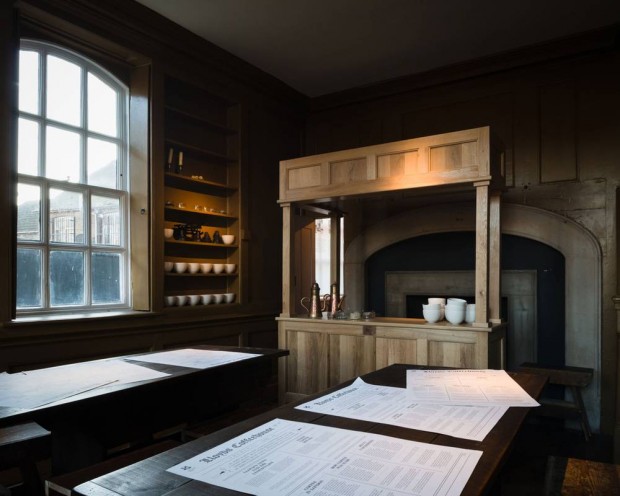What do you expect when visiting a National Trust property? Perhaps a rather traditional experience: carefully dressed rooms, carpets rolled back, ropes to protect the treasures, and a volunteer guide responsible for explaining the significance of each room. The National Trust has been doing a lot to change those preconceptions, however.
One project with a radical new approach to interpretation opened last year in Rainham, Essex. Rainham Hall was built in 1729 by Captain John Harle (1688–1742), a successful merchant, and came into the care of the Trust in 1949. Over the years it has housed a number of private tenants who made their own alterations to the original, solidly impressive Queen Anne building and diminished its surrounding lands. Part of the grounds, for instance, were sold for building the nearby railway that makes Rainham Hall unusually accessible by public transport for a National Trust house.
Rainham Hall, Essex. © National Trust/Sophia Schorr-Kon

The tangled history and lack of surviving contents made a new interpretive approach necessary, and the Trust (in collaboration with Studio Weave) has seized the opportunity. Within the surviving panelled or grisaille walls, marble floors and mahogany banisters, the rooms are kept sparse and a series of immersive or participatory techniques introduce visitors to the lives of the hall’s previous inhabitants. The first iteration focuses on John Harle and his life on sea and land. The small rooms contain soundscapes, which range from sea shanties to maritime nursery rhymes recorded by local school children. A larger room at the back holds only a padded bench engulfed by a heavy storm, which is projected on all four walls. Games and interactive points encourage you to think about the financing of merchant livelihoods and what you might take on a voyage like Harle’s.
The back parlour. © National Trust/Jim Stephenson

The Blue Room. © National Trust/Jim Stephenson

Yet the later layers of the Hall are not erased, nor is the patchy record of Harle’s life obscured. One back parlour remains a rag-rolled acid blue, lovingly decorated by a 1980s tenant inspired by the TV series ‘Changing Rooms’. It’s a subtle reminder of how the Georgian period has been reinterpreted by subsequent eras. One room reveals the charming range of objects found under the floors during restoration, from playing cards to cutlery. A cupboard alongside holds property lost by visitors since the Hall opened, making a simple, compelling connection between past and present.
My favourite spaces, however, are the bathrooms. A tiny visitor loo off the kitchen makes use of its blind to make visitors think about human waste disposal in the London of the past. Upstairs the functioning bathroom is kept for visitor use, while the roll-top bath is turned into a tropical sea, complete with models of Harle’s ships. Both basins come with towels embroidered with his handwritten initials, making you feel a part of the story.
A recreation of Lloyd’s Coffee House. © National Trust/Jim Stephenson

Harle’s life was bound up with Rainham. His house and businesses provided employment to the surrounding community and from the Hall’s windows he could watch his ships moored at the quayside. This ethos remains at the core of the Hall’s refurbishment and ongoing interpretation. Local groups have made the model boats and sewn replica dresses for Harle’s wife; the gardens are open for community use; and the café hopes to serve commuters on their way to the nearby station.
While this might be a surprising National Trust experience, it seems ideally suited to Rainham Hall, responding to its absences as well as its surviving beauties, and playing the same role in the community as John Harle. As such, the Trust is ticking every box of The Anarchist’s Guide to Historic House Museums, published this year by two American professionals concerned about the separation of American Historic House Museums from their communities. The National Trust was a groundbreaking creation in 1895 in its response to the urgent need to protect threatened historic buildings and natural spaces. It is pleasing to see it continue to lead the field in 2016 by making these unique spaces in its care relevant and appealing to an ever demanding public. It is, however, undoubtedly, a younger public that both Rainham Hall and the Anarchist authors are seeking, and it remains to be seen how the Trust’s older visitors respond to such different approaches, as well as how many more sceptical visitors will breach the barriers of their preconceptions to experience this new gem.
Rainham Hall is open to the public Wednesday to Saturday.



